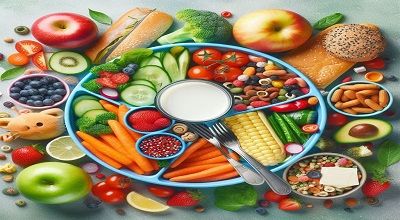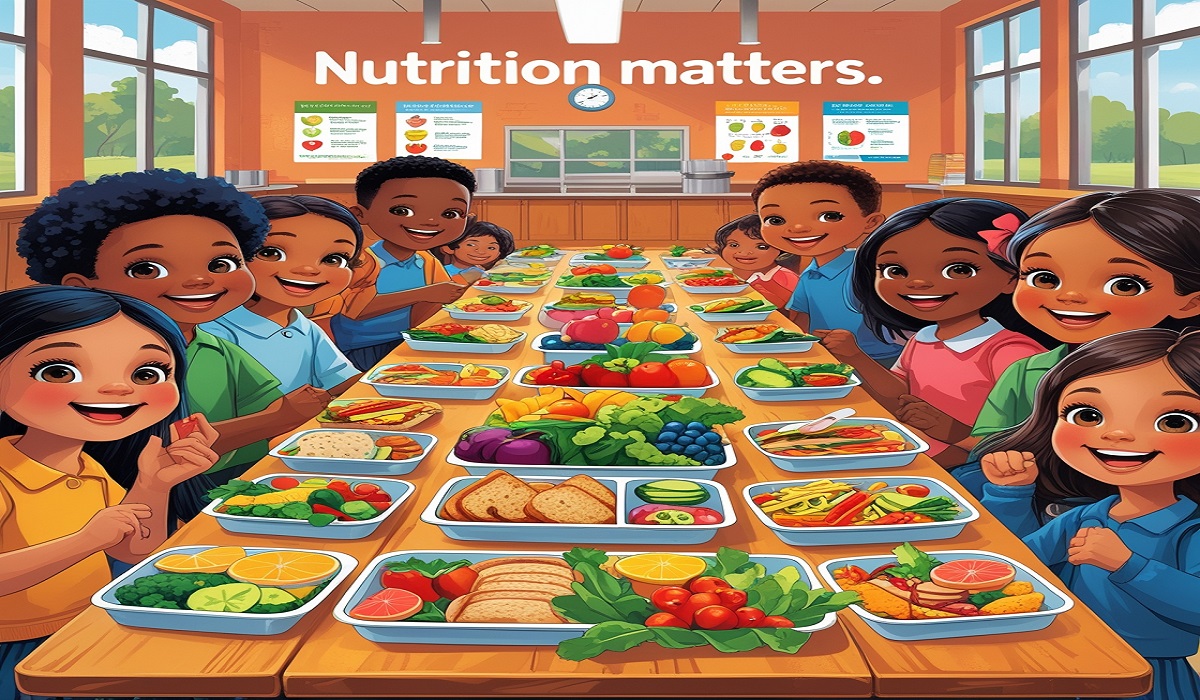Nutrition in School Lunches
Imagine a classroom full of students. It is mid-morning, and you can almost hear the stomachs rumbling. Focus wavers, energy dips, and a few heads might even rest on desks. Then comes the lunch bell. What happens next in the cafeteria is not just about filling empty stomachs. It is a critical part of the school day that directly affects every child’s ability to learn, grow, and thrive.
The conversation around nutrition in school lunches has never been more important. This article will walk you through the latest information on how healthy school meals support students and why this topic matters for everyone in education.
What Defines a Healthy School Lunch?
A healthy school lunch is much more than just a meal. It is a carefully planned combination of foods designed to give students the energy and nutrients they need. Think of it as fuel for both the body and the brain. A strong program for nutrition in school lunches includes a balance of fruits, vegetables, whole grains, and lean proteins.
The latest standards for these meals often follow guidelines that limit added sugars, salt, and unhealthy fats. Instead, they focus on natural, wholesome ingredients. For example, a lunch might include grilled chicken instead of fried, whole-wheat bread instead of white, and a side of apple slices with low-fat milk. This thoughtful approach to nutrition in school lunches ensures that every bite contributes to a student’s well-being.
- Fruits and Vegetables: A variety of colors means a variety of vitamins.
- Whole Grains: Foods like brown rice or whole-grain pasta provide long-lasting energy.
- Lean Proteins: Options like beans, chicken, or fish help build strong muscles.
The Direct Link Between Food and Learning in School
What a student eats for lunch has a powerful effect on their brain. Just like a car needs the right type of gas to run smoothly, a young brain needs high-quality food to work its best. Good nutrition in school lunches provides the building blocks for focus, memory, and problem-solving.
Students who eat balanced meals often show better concentration in their afternoon classes. They are more likely to participate in discussions and finish their work. When nutrition in school lunches is a priority, teachers notice students are more alert and engaged. This creates a better environment for education and helps every child do their best in school.
Poor food choices, like those high in sugar, can lead to a quick burst of energy followed by a crash. This crash makes it very hard to pay attention. Consistent, healthy meals help avoid this cycle, keeping energy and focus stable throughout the entire school day.

Health Advantages of Improved School Meal Programs
The benefits of strong nutrition in school lunches extend far beyond the classroom. These meals play a key role in supporting a child’s overall health and development. Regular access to healthy food helps students build strong bones, maintain a healthy weight, and develop good habits that can last a lifetime.
School meals often introduce children to new foods they might not try at home, like quinoa or roasted vegetables. This expands their tastes and encourages them to enjoy a wider range of nutritious options. A strong program for nutrition in school lunches can also help reduce the risk of health problems later in life, such as heart disease or type 2 diabetes.
Furthermore, these meals provide crucial support for children from families facing food insecurity. For some students, the breakfast and lunch they get at school are their most reliable meals of the day. This safety net is a vital part of the role education systems play in supporting community health.
How Schools Are Updating Their Menus for Better Nutrition?
Schools are constantly working to make their meals healthier and more appealing. The latest trends in nutrition in school lunches focus on using fresh, locally grown ingredients whenever possible. Many schools now have salad bars where students can create their own salads with plenty of fresh veggies.
Chefs and nutritionists are getting creative to make healthy food fun. They might use cookie cutters to shape fruits and vegetables into interesting forms or create tasty dips to encourage kids to try new things. The goal is to make students excited about the good food on their trays. This effort to improve nutrition in school lunches is a ongoing process that involves listening to student feedback.
Some schools even have garden programs where students grow their own tomatoes, lettuce, and herbs. They then get to see these ingredients used in their cafeteria meals. This hands-on education connects children to their food and helps them understand where it comes from.
Read Here: Kids’ Latest Games Free Download
The Role of Parents and Educators in Supporting Lunch Programs
Parents and teachers are essential partners in promoting good nutrition in school lunches. When everyone works together, students receive a consistent message about the value of healthy eating. Parents can start by reviewing the school’s monthly menu with their children and talking about the different foods offered.
Educators can support this mission by incorporating lessons about food and nutrition into their classroom teaching. A science lesson on plants, a math lesson on measuring ingredients, or a health lesson on food groups all reinforce the importance of the choices made in the cafeteria. This teamwork strengthens the entire system of education around food.
Families can also provide feedback to school administrators about what is working and what could be improved. Volunteering for a taste-testing event or joining a wellness committee are great ways to get involved. Advocacy for continued funding and support for these programs ensures that nutrition in school lunches remains a top priority.
Addressing Common Challenges in School Nutrition
Providing excellent nutrition in school lunches is not without its difficulties. Schools often work with tight budgets, making it a challenge to buy high-quality ingredients. There can also be a struggle to find meals that are both healthy and popular with students who may be used to different foods at home.
Another challenge is time. Lunch periods can be very short, causing students to rush through their meals. When children eat too quickly, they might not feel full and are less likely to enjoy their food. Schools are addressing this by looking at scheduling to allow for adequate time to eat. Solving these problems is key to the success of nutrition in school lunches.
Creative solutions, like using pre-cut vegetables to save on preparation time or applying for grants to support farm-to-school programs, are helping schools overcome these hurdles. The constant goal is to ensure that every student has access to a meal that supports their health and their education.
FAQs on Nutrition in School Lunches
1. Why is nutrition in school lunches so important for a child’s education?
Healthy meals provide the energy and nutrients a brain needs to focus and learn. Students who eat well are often more alert and perform better in their afternoon classes, making nutrition in school lunches a key part of academic success.
2. How can I find out what is on my child’s school lunch menu?
Most school districts post their monthly menus online on their website or through a parent portal. You can also contact the school’s main office or the nutrition services department directly to request a copy.
3. My child is a picky eater. How can school lunches help?
School meals can actually help picky eaters by exposing them to new foods in a positive, social setting. Seeing their friends try different foods often encourages children to be more adventurous. The variety offered through nutrition in school lunches programs introduces new tastes gradually.
4. Are school lunches actually healthy?
Yes, by law, school meals must meet specific federal nutrition standards. These standards ensure that lunches include required amounts of fruits, vegetables, whole grains, and lean proteins while limiting sodium and unhealthy fats. Schools are continually working to improve the nutrition in school lunches.
5. How can I get involved in improving my school’s lunch program?
You can start by joining your school’s Parent-Teacher Association (PTA) or wellness committee. These groups often discuss meal programs. You can also provide constructive feedback directly to the school district’s nutrition director or attend school board meetings to voice your support for strong nutrition policies.
Conclusion
The food served in school cafeterias is far more than just a line item in a budget. It is a fundamental investment in our children’s health, their ability to learn, and their future habits. A strong commitment to nutrition in school lunches provides immediate benefits in the classroom and long-term benefits for a lifetime of wellness.
By working together—schools, parents, and communities—we can ensure that every student has access to the healthy, energizing meals they need to succeed in their education and beyond. The latest efforts in this field show a promising trend towards fresher, more appealing, and more nutritious meals for all students.
Note:
It’s not just about filling up bellies; it’s about nourishing minds and bodies for a brighter future!
